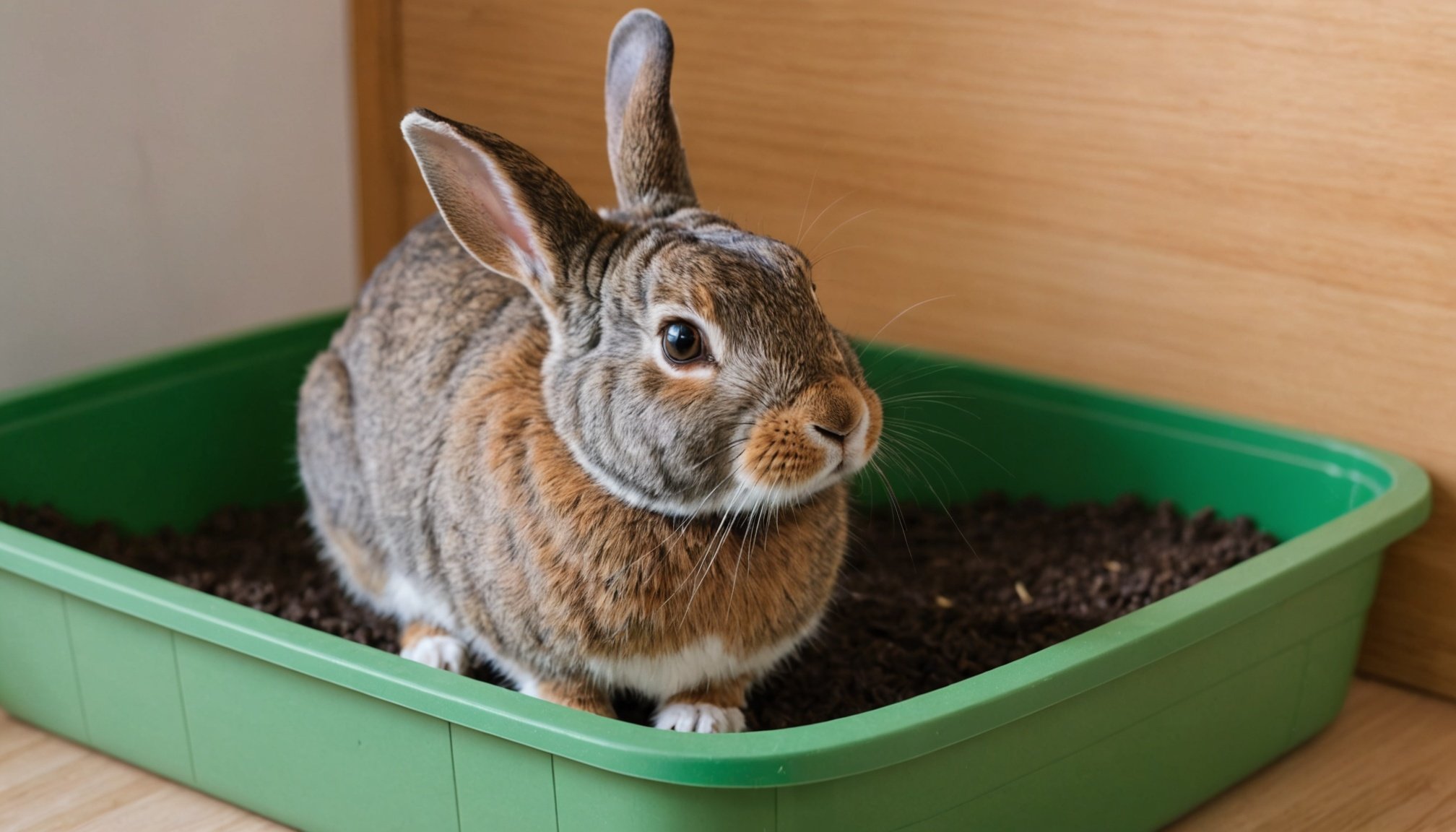Rabbits are delightful companions that bring joy and warmth into many homes. However, ensuring your bunny cohabits smoothly with you requires a bit of guidance. One of the most essential aspects of caring for your pet rabbit is teaching them to use a litter box, a practice that not only keeps your home clean but also enhances your rabbit’s hygiene and comfort. In this article, we explore effective methods to train your rabbit to use a litter box, ensuring that your furry friend becomes a well-mannered member of your household. We delve into why litter training is beneficial, the appropriate materials for a litter box, and step-by-step training techniques designed to cater to your rabbit’s unique needs.
Understanding the Benefits of Litter Training
Litter training your rabbit is more than just a convenience; it significantly improves the quality of life for both you and your pet. Rabbits, by nature, prefer to keep their living areas clean. This natural inclination makes them relatively easy to train with the right approach.
Also to read : Mastering the art of cat-dog introductions: proven techniques for a smooth transition
Advantages for Your Bunny
- Hygiene: Proper litter habits help your rabbit maintain cleanliness, reducing the risk of infections and diseases.
- Comfort: A well-trained rabbit enjoys a more comfortable and stress-free life, knowing that their needs can be met predictably.
- Environment: A clean living space means a happier and healthier rabbit, enhancing their overall well-being.
Benefits for Your Home
- Cleanliness: A litter-trained rabbit is less likely to scatter waste, making it easier to maintain a tidy living area.
- Odor Control: Using a proper litter box system can manage and reduce unpleasant smells, keeping your home fresh.
- Convenience: Once trained, your rabbit requires less manual cleaning, saving you time and effort. Understanding these benefits can motivate you to invest the time and resources necessary to train your rabbit effectively.
Selecting the Right Litter Box and Materials
Before beginning the training process, it’s crucial to select the appropriate litter box and materials for your rabbit. Bunnies have specific needs that differ from other pets, such as cats or dogs, and these must be considered.
Choosing the Right Box
- Size: Your rabbit’s litter box should be spacious enough for them to move comfortably while managing waste. Consider your rabbit’s size when making this choice.
- Accessibility: Ensure that the box is easy for your rabbit to hop in and out of without difficulty. A box with low sides can facilitate this.
- Durability: Select a sturdy box that will not tip over easily, ensuring stability for your rabbit.
Consider the Litter Type
- Safety: Avoid clay-based litters or those with added fragrances, as these can be harmful if ingested.
- Absorbency: Opt for paper or hay-based litters that control odors and absorb moisture effectively.
- Comfort: The litter should be soft enough for a rabbit’s sensitive paws, ensuring that they feel comfortable using it.
Placement of the Box
The location of the litter box is crucial. It should be placed in a quiet, accessible area where your rabbit feels secure and undisturbed. This encourages regular use and prevents accidents in undesired areas of your home.
In the same genre : What are the best practices for grooming your long-haired cat?
Steps to Successfully Train Your Rabbit
Training your rabbit to use a litter box involves patience, consistency, and understanding your bunny’s behavior. While rabbits are naturally inclined to keep their areas clean, they still require guidance and structure to learn effectively.
Step-by-Step Training Guide
- Introduce the Litter Box: Begin by placing the litter box in your rabbit’s preferred corner of their cage or play area. Rabbits often choose specific spots for elimination, which can aid the training process.
- Encourage Usage: Place some of your rabbit’s hay in one corner of the box, as rabbits often graze and go to the bathroom simultaneously. This encourages them to associate the litter box with the right activity.
- Observe and Respond: Keep a close watch on your rabbit’s habits. If they start using an undesired area, gently guide them to the box and reward them when they use it successfully.
- Consistent Reinforcement: Reinforce positive behavior with treats and praise to encourage continued use. Avoid negative reinforcement, as it can create anxiety and hinder progress.
- Gradual Expansion: Once your rabbit consistently uses the box, you can gradually expand their allowed roaming area, ensuring they continue to return to the box.
Common Challenges and Solutions
- Litter Scatter: If your rabbit kicks litter out, consider a covered box or a higher-sided option.
- Accidents: Clean accidents promptly with a mixture of vinegar and water to eliminate odors and discourage repeated incidents.
- Stubborn Behavior: Some rabbits may take longer to train. Maintain patience, and consider re-evaluating the litter box setup if progress stalls.
Maintaining a Clean and Healthy Environment
Once your rabbit is successfully trained, it’s essential to maintain their litter box and living area to ensure ongoing success. A clean environment prevents relapse and keeps your rabbit healthy and content.
Regular Maintenance
- Daily Cleaning: Remove soiled litter and waste from the box daily to prevent build-up and odors. This routine keeps your rabbit using the box consistently.
- Weekly Overhaul: Thoroughly clean the litter box with a rabbit-safe cleaner weekly. Replace all litter to maintain a fresh and inviting environment.
- Monitor Litter Levels: Keep an eye on the litter levels to ensure they remain sufficient for your rabbit’s needs.
Providing a Hygienic Home
- Clean Surroundings: Regularly clean your rabbit’s entire area, including bedding, toys, and accessories, to prevent the spread of bacteria.
- Health Checks: Regularly check your rabbit for signs of health issues, such as skin irritation or changes in behavior, which could indicate problems with the litter or box.
- Vet Visits: Schedule regular veterinary check-ups to ensure your rabbit remains in optimal health.
By following these guidelines, you ensure that your rabbit remains a happy and healthy member of your family, with a reliable litter habit that benefits all.
Training your rabbit to use a litter box is a rewarding endeavor that enhances your relationship with your pet while contributing to a cleaner, more manageable living environment. By understanding your rabbit’s natural tendencies, selecting the appropriate litter box and materials, and following a structured training process, you set the stage for success. With consistency, patience, and love, you can foster a harmonious household where your rabbit feels comfortable and secure, ensuring a mutually enjoyable companionship. Remember, the key to effective training lies in understanding and catering to your rabbit’s unique needs and behaviors. As you embark on this journey, you’ll discover that a well-trained rabbit not only enriches your home but also brings unparalleled joy and fulfillment to your life.










